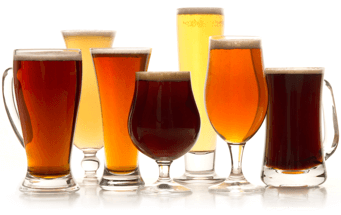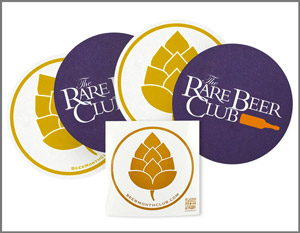Brouwerij Boon - 2016 Oude Geuze Boon Black Label
-
ABV:
7% -
Bottle Size:
750-ml -
Int’l Bittering Units (IBUs):
36 -
Serving Temperature:
45–52° F -
Suggested Glassware:
Tulip, Lambic Tumbler, or Chardonnay Glass -
Malts:
Pale ale Malt, C40, C75, Brown, Black, Chocolate, Munich -
Hops:
Apollo, Cascade,....

Let’s start here: This is probably the tastiest geuze that Boon has ever released. First offered in late 2015 to celebrate the brewery’s 40th anniversary, this drier take on geuze was inspired by the brewery’s collaboration with Mikkeller—which resulted in Oude Geuze Boon “Bone Dry Selection” back in 2015. This month’s featured Oude Geuze Boon Black Label is similar in overall profile—it’s also a blend of beers aged 1, 2 and 3 years inside oak casks—and it’s the driest beer Boon has ever made. This latest batch of Black Label is stellar. We managed to allocate just enough for our Rare Beer Club members. This will see very light U.S. distro once it does make it stateside, but it’s not going to be easy to find—so do try to share.
Let’s dig into this one. This pours a bright, lightly hazed golden-orange, capped by a thick, resilient foam with miniscule bubbles. A strong perimeter of lacing coats the sides of one’s glass, and the liquid underneath ultimately looks more like a rich honey than, say, an orange-golden hazy IPA, which is a wholly different beast. This beer looks like it’s seen some stuff, and is stronger for it. The aromatics are assertive and mouthwatering from that first pour: a massive but perfectly balanced melange of tart lemons, funkiness, salty cheeses, and subtler nudges from the underlying wood character. While pungent, this is exactly the sort of world-class execution we’d hope for from premium geuze releases: all of the funk and tartness and barrel complexity—but integrated seamlessly, without any distractions. This is one of those beers we could smell for hours and never get bored with: sour, fruity, deep, and expressive.
The flavors and overall balance remind us greatly of our experiences with Drie Fonteinen’s limited releases. There’s effervescence, bright lemony tartness, plus a welcome salinity that helps smooth everything out from the start, and there are none of the subtle off-notes you might find in lesser lambics elsewhere. The funk level’s perfect—goaty and rustic—while a refreshing acidity steers this carefully, never veering anywhere close to that enamel-peeling impact of many American sours. The fruit range is expectional for a lambic sans fruit: citrus, for sure, but also ripe pears, apple and peach. The complexity’s there at every level, from its tannic hint and almond notes via the oak barrels, to that well-suited cheesiness of purposely aged hops that help make lambic so distinctive. Enjoy this with someone special, and make sure to leave time to really dig into one of the best geuzes we’ve tasted in a long, long while.
If given large sums of cash with the express requirement that it be spent on beer for aging (we keep hoping this will happen, some day), our cellar space would be wall-to-wall geuze. Where so many seemingly burly beers tout double or even triple the ABV of most geuzes, few can keep pace with this style’s cellarability. Also: the best-buy date on our bottles of this is 20 years away... Though it’s delicious now, don’t be afraid of losing track of a few bottles. For pairing options, we’re inclined to enjoy this beside Belgian moules-frites, or a funky and creamy blue cheese. Cypress Grove’s goat-milk Humboldt Fog also tends to be an excellent fit when it comes to matching up with generous, expressive geuzes like this Boon offering.
There’s definitely something about lambic.
Actually, there are a whole bunch of things about lambic. Part of it is the unknown: the fact that traditional lambic production involves spontaneous fermentation, with local wild yeasts and bacteria coaxed from the passing air. (It often seems a bit like sorcery...) Part of it is the patience required: those yeasts and bacteria frequently take their good sweet time fermenting, with blended offerings like geuze incorporating barrels of lambic that can be three or more years in the making. Part of it is the blending: that learned art of tasting and combining older and newer barrels of lambic, of creating something tastier than the sum of its parts. And part of it is the long-awaited result: sour, funky, refreshingly complex beer that’s unlike any other.
We’re excited to share with our members this month an especially rare example hailing from the heart of lambic country. Frank Boon and his brewery, along with the folks of Cantillon and Drie Fonteinen, are often regarded as saviors of this finicky, time-intense means of beer production. As hard as it may be to believe while actually drinking traditionally made lambic, for many years it was on a slow and spiraling departure from this world, both from brewery closures and from market pressures to artificially sweeten the final product. Today, though... It’s instead a new heyday for Belgian lambic producers, with Boon helping to lead the effort.
Brouwerij Boon finds its distant roots as a brewery extending back to 1680, as a farm-brewery and distillery in Lembeek, a small village about thirty minutes southwest of Brussels. The tax situation at the time was encouraging to brewers and distillers alike, and there remains debate as to whether the term lambic originated from the village name itself or from the “alembic,” a distillation device preceding the pot still. Either way, Lembeek still maintains its very close ties with lambic. Frank Boon purchased the brewery in 1975, and his location currently sits near the shore of the River Senne: a nexus of wooden barrels and cherry trees.
Today, Boon creates various different lambics, including geuzes, young (jonge) lambics, krieks (made with cherries), framboises (raspberries), and faros (spices and candy sugar). Some are on the sweeter side, while others—especially our featured selection—are much drier. All can take some major effort to track down. At the tippy-top of their authenticity-minded lambic releases is one of our featured selections this month: 2016 Oude Geuze Boon Black Label, a mind-blowing blend of oak-aged lambics that we’ll, frankly, never be able to get enough of.

Unmatched Variety by style, brewery & country
Choose from Five different Beer Clubs offering unmatched variety by brewery,
country of origin, and beer style to suit your specific tastes.


